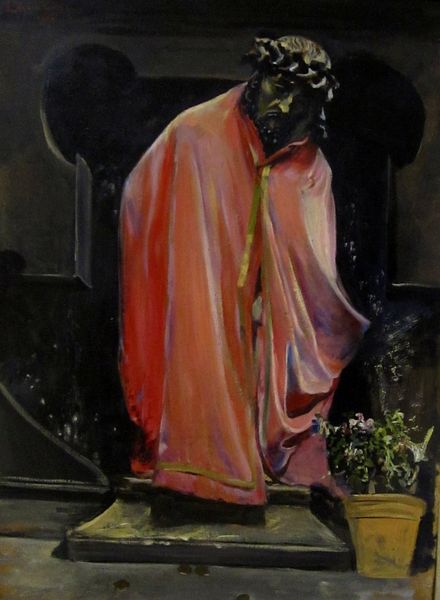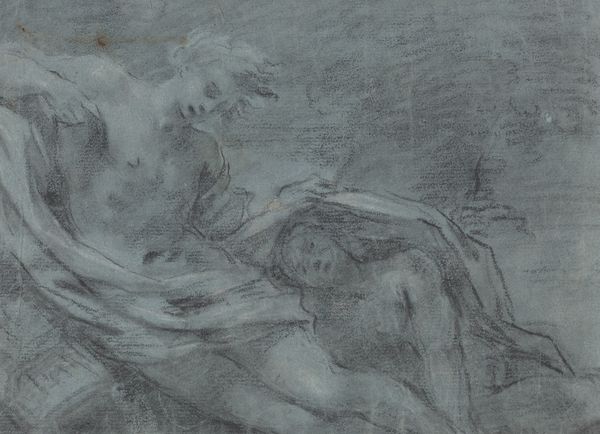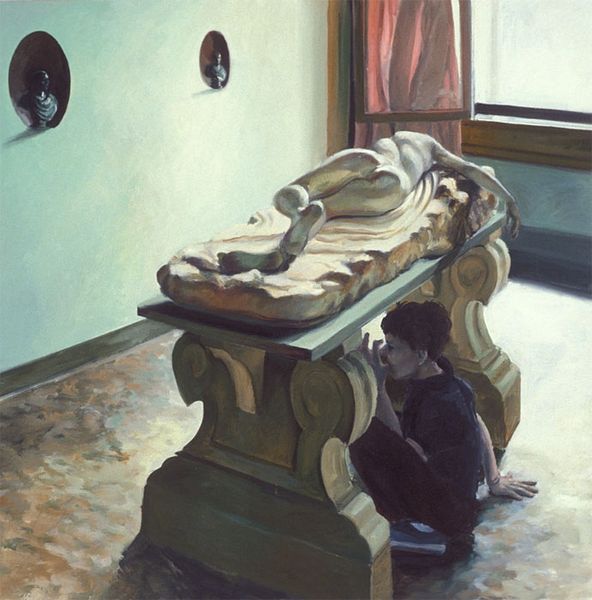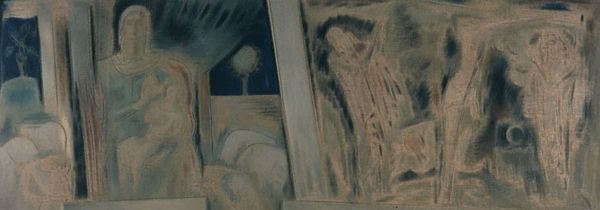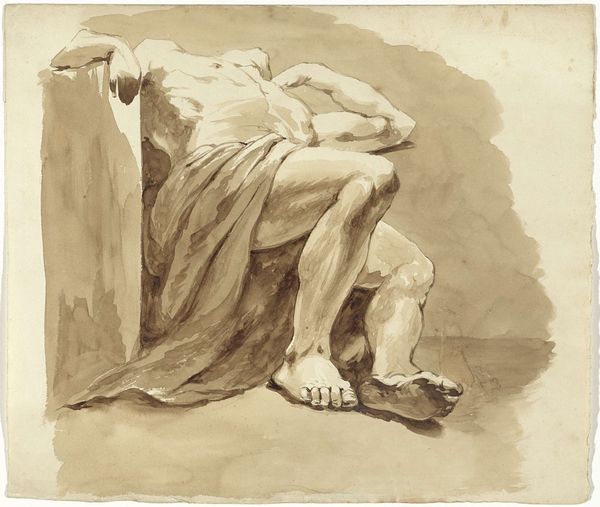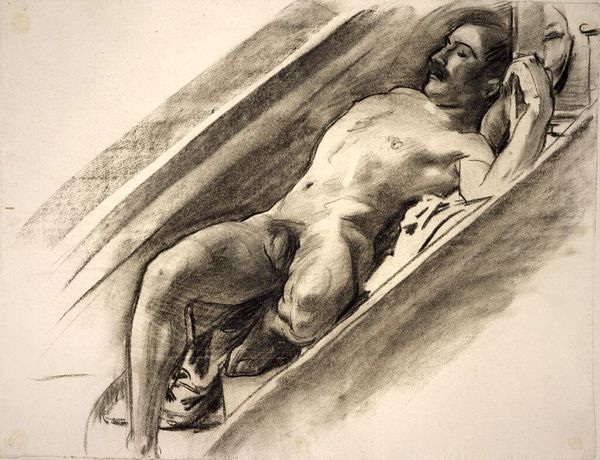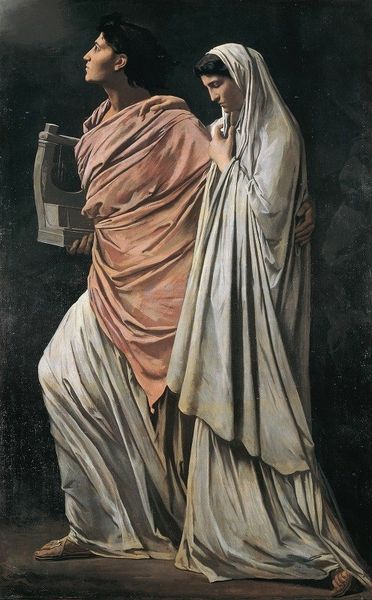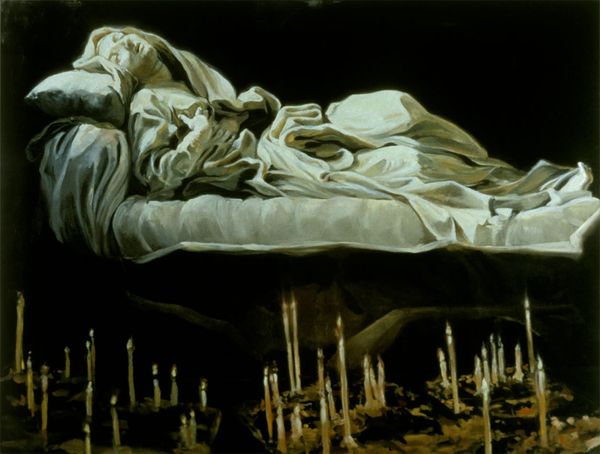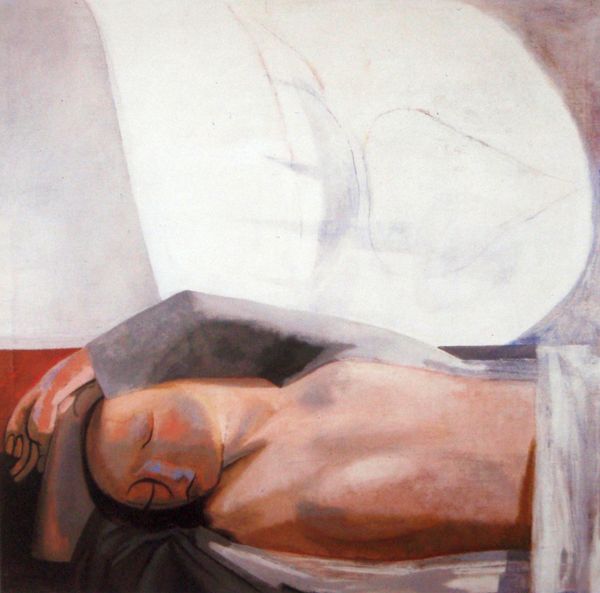
Dimensions: 115 x 175 cm
Copyright: Jan Cox,Fair Use
Curator: The way Jan Cox renders the figures in “The Hiding,” painted in 1942 using oil paint, always stops me in my tracks. Editor: It has a haunting quality, doesn't it? The figures almost look like sculptures emerging from the darkness. What’s your take on this piece? Curator: This painting, created during World War II, speaks volumes about the historical and social anxieties of the time. We have to consider its creation under Nazi occupation. What narratives of resistance, silence, or complicity do you see woven into this scene? The title itself, "The Hiding," prompts a question: who is hiding from whom, or what? Editor: That's interesting. I hadn’t considered the war context directly. I was more focused on the figures themselves, their gestures, and the strange watcher figure by the window. The open window – is that symbolic of a hope for escape? Curator: Absolutely. And consider the figures: are they victims, collaborators, or simply trying to survive? How do their genders and implied social positions influence your reading of their actions and emotions? Editor: The one in shadow does seem to me like he is a watchman. The pose seems menacing. Curator: And the nude female figures, almost statuesque, perhaps represent vulnerability, yet their stillness could also be a form of defiance. Art like this asks us to delve into complex layers of power, vulnerability, and the struggle for agency amidst chaos. What do you make of this romanticized or even melodramatic style when reflecting upon war time conditions? Editor: It seems as if Cox romanticizes the horrors of conflict and somehow makes it more human, by adding this artistic representation in this terrible moment. It definitely provides some room to debate on war and peace in general, considering the title. I appreciate how you framed the conversation around historical and social conditions. Curator: Absolutely, this work challenges us to continually interrogate history, question established narratives, and amplify voices that have been marginalized or silenced. That’s why it remains relevant and deeply resonant today.
Comments
No comments
Be the first to comment and join the conversation on the ultimate creative platform.
